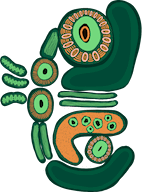
What you need to know about toothpaste and its myths
Although toothpaste may be caught up in the lifestyle and wellness industry, it is important that we are cautious when buying toothpaste and that our choices are not centred around how a tube looks or smells, but rather, its content. Because what’s inside the tube and the way it helps keep our teeth and gums healthy is the top priority.
What to consider when choosing your toothpaste
Today’s market is flooded with toothpaste choices. Everything from all natural, to charcoal and fluoride-free to exotic flavour combinations can lead us down the path of making a toothpaste choice that may not be the best choice to keep our teeth and gums healthy.
With gorgeous packaging and often a high price to match, this is one product where price may not be the best indicator for how it will perform in keeping our smiles smiling. Knowing the key elements of what you should be looking for in a toothpaste will assist you in cutting through the selection on the shelves and making the best choices for your oral health. The Australian Dental Association recommends that we utilise a toothpaste containing fluoride. This is the key ingredient to look for when making your toothpaste choice as it actively helps fight tooth decay.
Whilst there is some concern about the consumption of fluoride itself, studies have shown that the very low doses of fluoride contained in toothpaste coupled with the fact that we do not ingest it, makes fluoride very safe. For young children who may at times swallow toothpaste, there are lower doses of fluoride contained in children’s toothpaste.
How to lower your risk of tooth decay:
- Use a good quality, fluoridated toothpaste every day. Buy products bearing the Australian Dental Association (ADA) Seal of Approval .
- Drink fluoridated water, rather than bottled water. Fluoride helps to remineralise teeth where the enamel is weak and prone to decay. Fluoride also slows the activity of bacteria in the mouth to reduce the risk of tooth decay.
- Brush twice a day with a soft, small headed toothbrush. This helps to remove food and plaque from teeth. Tongue brushing also helps to reduce bacteria from multiplying.
- Floss daily to remove food, bacteria and plaque from between the teeth. Flossing helps to prevent decay and maintain gum health.
- Consume a diet low in refined sugar and acids
- Have regular dental visits – ideally every six months which helps to provide early detection of tooth decay and address problems when they are easier to manage and often cheaper to treat.
You can make better toothpaste choices
A few simple guidelines to help guide you
Read toothpaste labels and become familiar with the product information and what it means. Make sure fluoride is included – as Stannous Fluoride or Sodium Fluoride or, a combination of both. The fluoride in toothpaste is in small, safe concentrations. It is high enough to be beneficial but not to cause harm. Fluoride doses are monitored carefully by manufacturers to ensure consistency and therapeutic value.
Choose a toothpaste for sensitive teeth if you have issues. Sensitive toothpastes work by desensitising nerve endings of the teeth and can be very effective when used regularly.
If you have children aged between 18 months and six years, brush their teeth using a children’s toothpaste. These have a lower concentration of fluoride than adult toothpaste. Remember to only use a small amount – a pea-sized quantity is enough. Encourage your child to spit out and not swallow the toothpaste. What’s left on their teeth will have a protective effect.
The one thing you can do to maximise the beneficial effects of toothpaste is NOT to rinse your mouth with water immediately after brushing and avoid eating or drinking for 20 mins. Toothpaste works by being absorbed into the tooth so it’s essential to give that process time to occur. It’s very much like putting on sunscreen and immediately going for a swim – the protective effect is diminished compared to leaving it for 15-20 minutes to do its magic.
Speak with your dentist about what toothpaste is right for you. Some people need a specific type of toothpaste to meet their oral hygiene needs. Book an appointment to have your teeth checked.
References
https://www.ada.org.au/Dental-Health-Week-2020/Oral-Health-for-Busy-Lives/Brushing-and-flossing
Kids – Your Dental Health | Australian Dental Association (ada.org.au)
Policy Statement 2 (ada.org.au)
Seal of Approval – Your Dental Health | Australian Dental Association (ada.org.au)
